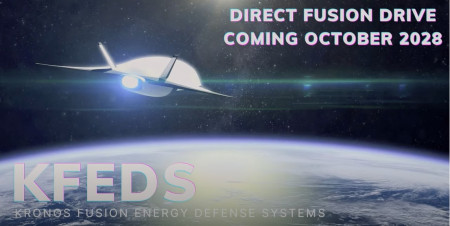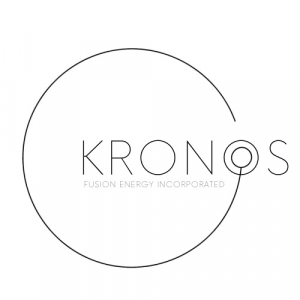Kronos Fusion Energy Looks to Take the Next Steps With Direct Fusion Drive

WASHINGTON, March 14, 2022 (Newswire.com) - The promise of fusion energy generation offers not just the potential for limitless energy on earth, but the action of the fusion reaction can also be harnessed as thrust to propel a spaceship faster than ever imagined, revolutionizing space travel to open up deep space exploration and rapid inter-planetary travel. The Direct Fusion Drive may be edging closer to reality thanks to the work of Kronos Fusion Energy Defense Systems, in conjunction with the U.S. Department of Defense. The company aims to launch a working DFD prototype in October 2028. The magnitude of this mission is compounded by the announcement of the White House Summit: Developing a Bold Decadal Vision for Commercial Fusion Energy this Thursday, March 17, 2022 at 10:00 AM to 1:00 PM ET.
At the moment, spacecraft rely on two different propulsion technologies. Most familiar are chemical propellant rockets, which create substantial thrust but also require vast amounts of fuel to achieve this, severely limiting their range and payload. The second option is the Ion Drive which generates thrust using electricity. While ion drives can propel spacecraft long distances, they can only operate in the vacuum of space and take a very long time to accelerate.
The Direct Fusion Drive (DFD), however, is both much smaller - only about the size of an SUV - while generating massive amounts of thrust across almost unlimited distances. In addition to thrust, the DFD simultaneously generates the electricity needed to operate the spacecraft.
The process, common to all fusion energy systems, relies upon extremely high temperatures and pressures to force atoms to fuse, a process that converts some of the mass of the atoms into energy. A Direct Fusion Drive uses low-frequency radio waves to heat a mix of deuterium and helium-3, with magnetic fields to confine the resulting plasma in a ring. As this plasma rapidly rotates, propellant is heated by this plasma and the DFD allows a small amount to be released, directed through a controlled aperture, into the rocket's nozzle, generating thrust. Current projected exhaust velocities are as high as 25,000 kilometers per second, or 55.9 million mph.
A video demonstration of the Direct Fusion Drive from Kronos Fusion Energy Algorithms can be viewed here.
"The power generated by a Kronos Fusion Energy Defense System's Direct Fusion Drive can sustain space travel, or the life support of a surface mission, for many years, without reliance on external solar capture or the need to carry huge amounts of fuel," said Brig. Gen. (Ret) Paul E. Owen, CEO of Kronos Fusion Energy Defense Systems. "Fusion energy is by far the safest way to get across our solar system. Kronos Fusion technology can exceed the power of even the most ambitious plans to use Nuclear Fission technology as a fuel for space travel."
For further information:
Kronos Fusion Energy
1122 Colorado St
Houston, TX 78701
https://www.kronosfusionenergy.com/
PR Contact: Erin Pendleton - e.pendleton@kronosfusionenergy.com
Kronos Fusion Energy Defense System is headquartered in Austin, Texas. The company will develop algorithms, simulations, and micro fusion energy generators that will optimize fusion energy. The company will provide America with a competitive advantage in the future energy market with a focus on clean and limitless energy. It has partnerships with leading facilities and experts in essential areas worldwide. The government partners include NASA, the Department of Defense, and DDE National labs. The private partners extend to IBM, Deloitte, Harvard Business School, SAP, and Mathlabs Ventures.
Source: Kronos Fusion Energy Defense Systems
